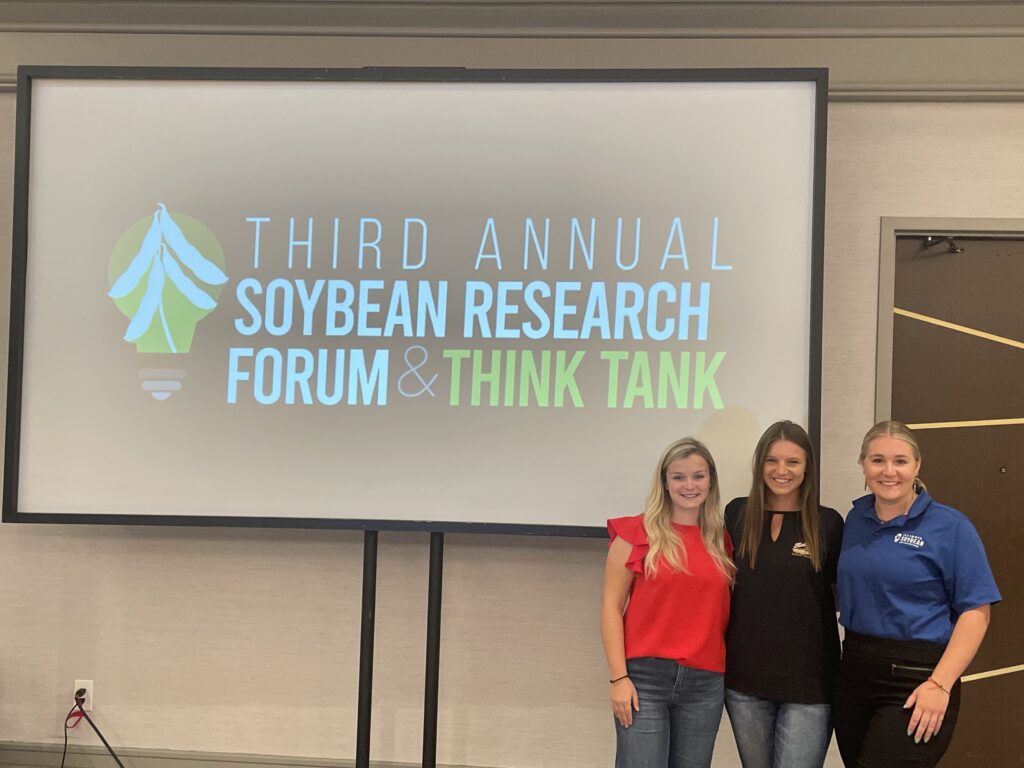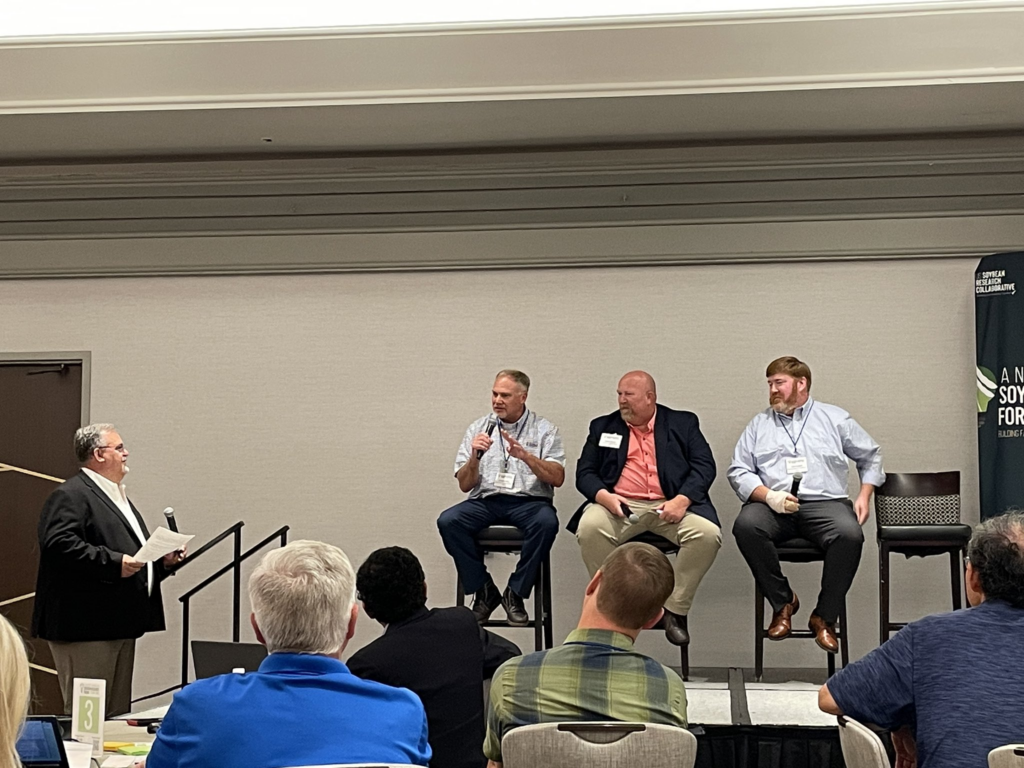The 3rd Annual Soybean Research Forum and Think Tank took place July 26th through July 28th. Illinois Soybean Association (ISA) staff that attended were Megan Miller, Stacy Zuber, and myself along with Bryan Severs and David Wessel as board members. Throughout the three days, we heard from multiple speakers about traceability and transparency in the agriculture industry, specifically within soybean production.
The goals for this event was to learn, bring back new information, and to access research needs. Attendees of the conference were placed at tables and mediators recorded notes from the table talks and guided discussion. As a group, we discussed the speakers’ presentations and answered questions that were provided. All the table discussions were then pooled together and analyzed to determine various research needs. Valuable information was gathered from the table discussions.
On Wednesday, there was a welcome reception where attendees were able to network with other state soybean associations, speakers, industry members, and farmers. At the reception, I was able to connect with two other interns, Hannah Beth Elliott and Lily Weldon from the Kentucky Soybean Board, and we are pictured below.
On Thursday, there were various speakers, such as Jennifer Coleman, who talked about the agri-value chain and Anastasia Volkova who discussed Regrow Ag and their program. Andy Jordan gave insight into the Cotton Trust protocol and Lindsay Malone reviewed Climate Smart and the importance of soil health metrics.
Jennifer Coleman’s speech about the agri-value chain really interested me and I was able to take away several valuable pieces of information. One topic that caught my attention was how she related traceability and transparency to drivers in the consumer food market. She started her discussion with a value chain that started at inputs such as seed and fertilizer. Then the chain moves to farmers, and from there, moves to processing and trading companies. The chain concludes with the end consumer.
In this value chain market, drivers of traceability and transparency are based on consumer demand. It starts with consumers reaching down the value chain to the processing and trading companies for information regarding traceability and transparency. The processors and traders reach down to the farmers for information, and the farmers reach down to the seed and fertilizer companies. This process is fueled by consumer demand as it has been realized that consumers want food integrity.
Food integrity plays a role in building trust and having shared values from the farmer to the end consumer. This topic really stuck with me because the basis of the consumer population does not know where their food comes from or what ingredients go into the food they are consuming. Consumers expect the food they buy to be sustainable and free of chemicals. This is where the value chain comes back in as far as gathering that information wanted by consumers.
Consumer trust was a very interesting point Coleman brought up, and I thought about how the requirements for ‘Non-GMO” and “Organic” food labels are a lot looser than the general consumer may know. She also brought up the topic of fraud and companies labeling their products as organic and how that is affecting the integrity of producers. Coleman then brought her talk back to traceability and how it could give protection to some farmers that are applying fertilizers and pesticides correctly. Adversely, it could cause issues if farmers are not applying fertilizers and pesticides correctly or according to chemical labels. Further impacts of traceability and transparency are projected to increase technology value by about $28 billion by 2030 according to Coleman. This increase is due to data having to flow through each point of the value chain for traceability to work up and down the value chain. This is where the implementation of artificial intelligence (AI) enters the conversation. Large amounts of data would need to be collected and analyzed and this technology could help with this lengthy collection and analysis process. AI would increase farmer efficiency and value chain efficiency. It also provides proof and validation.
Artificial intelligence brought up a few questions at our table about how the implementation of data collection will work as well as concerns with AI. It seems like AI was a concerning topic with the group and where it is sources facts. The conversation concluded with all of us at the table agreeing that AI could cause issues with integrity due to it sourcing its own information essentially creating “facts” that appear real at first glance, but potentially may not be credible or real. The problem is when the “facts” that AI generates is false information, but people start to trust everything they read from AI.
On another note, one of ISA’s very own board members, Bryan Severs, participated in a growers panel. He was granted the opportunity to give insight into what sustainability practices he has implemented within his own operation and how traceability and transparency will affect his operation in central Illinois.
In conclusion, there were various other speakers that gave very insightful talks about different ways traceability and transparency will continue to influence agriculture. I can confidently say that the goals of the Soybean Forum and Think Tank were met from my perspective. It was an amazing opportunity that I had a chance to participate in and allowed me to bring knowledge and ideas that I learned back to the team.




 and then
and then